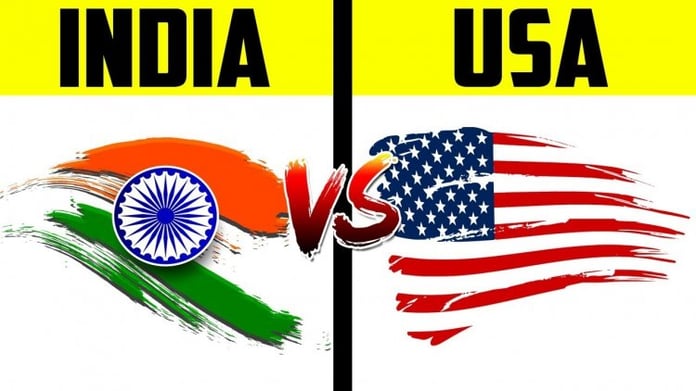In a world characterized by vast geographical diversity, the comparison of nation-states often captivates our imagination. India and the United States, two prominent global powers, stand out as epicenters of culture, politics, and innovation. Exploring the expanse of these nations unveils a tapestry of captivating dimensions, both tangible and intangible, that have shaped their distinct identities and influenced the course of history.
Geographical Extent: A Land of Contrasts
When it comes to the sheer size of land area, India and the United States showcase remarkable disparities. India, with its expansive territory, spans approximately 3.29 million square kilometers (1.27 million square miles). Meanwhile, the United States boasts an awe-inspiring land area of about 9.83 million square kilometers (3.80 million square miles). This discrepancy places the United States as the fourth-largest country globally, while India secures the seventh position.
Population: Unveiling the Magnitude of Humanity
Beyond geographical dimensions, population plays a pivotal role in shaping a nation’s dynamics. India, holding the first position in the world , boasts a staggering population of over 1.408 billion individuals. Surpassing all other nations, India’s vast populace reflects its rich tapestry of diversity, encompassing a multitude of languages, religions, and cultural traditions. Meanwhile, the United States takes the third spot globally, with an estimated population of around 331 million people. This population contrast between the two nations highlights the unique social landscapes and intricate complexities that define their respective societies.
Cultural Splendor: The Kaleidoscope of Heritage
India and the United States embody rich cultural tapestries that have evolved over centuries, shaping their distinct identities. India, renowned for its ancient civilization and historical landmarks, is a land where traditions coexist with modernity. Its rich heritage encompasses a multitude of religions, including Hinduism, Islam, Christianity, Sikhism, Buddhism, and Jainism, each contributing to the vibrant mosaic of Indian society.
In contrast, the United States prides itself on being a melting pot of diverse cultures and immigrant communities. Rooted in a history of migration, the American cultural landscape embraces influences from across the globe, with contributions from European, African, Asian, and Latin American traditions. This amalgamation has given rise to a unique American identity, celebrated through art, music, literature, and various cultural expressions.
Economic Prowess: Powerhouses of Prosperity
As economic powerhouses, both India and the United States command global influence. The United States boasts the world’s largest economy in terms of nominal GDP, which exceeded $22 trillion in 2020. It remains a driving force in technological innovation, finance, entertainment, and numerous other industries.
India, on the other hand, is recognized as one of the fastest-growing major economies globally. With a GDP of around $3.75 trillion in 2023 , India embraces a diverse economic landscape, including sectors such as information technology, manufacturing, agriculture, and services. Its burgeoning middle class, expanding consumer market, and entrepreneurial spirit contribute to its rising prominence on the global economic stage.
Political Landscapes: Democracies in Action
Both India and the United States are vibrant democracies, guided by the principles of representative governance and the rule of law. India’s parliamentary system features a federal structure, with power shared between the central government and states. The United States, in contrast, operates under a federal presidential system, where power is divided between the federal government and individual states.
While their political systems differ, India and the United States are united by their commitment to democratic values, freedom of expression, and protection of individual rights. Both nations have experienced historical milestones and continue to navigate the challenges and opportunities that arise within their democratic frameworks.
International Relations: Global Diplomatic Players
India and the United States maintain intricate webs of international relationships, shaping global diplomacy and strategic alliances. The United States, as a superpower, has traditionally played a significant role in world affairs. Its foreign policy endeavors span the globe, addressing issues such as national security, trade, human rights, and environmental concerns.
India, too, exerts its influence on the international stage. With its rising geopolitical significance, India pursues strategic partnerships across continents, fostering economic cooperation, regional stability, and cultural exchanges. As the world becomes increasingly interconnected, the interactions between these two nations bear weight on a range of global challenges, including climate change, terrorism, and trade dynamics.
In Conclusion: A Tapestry of Influence
India and the United States, though contrasting in size, population, culture, economy, and politics, share a common thread of influence that reverberates across the globe. Their diverse dimensions intertwine to shape the trajectory of international relations, innovation, and cultural exchange. Understanding the vastness of these nations illuminates the grandeur of our world and the remarkable human endeavors that continue to propel civilization forward.

